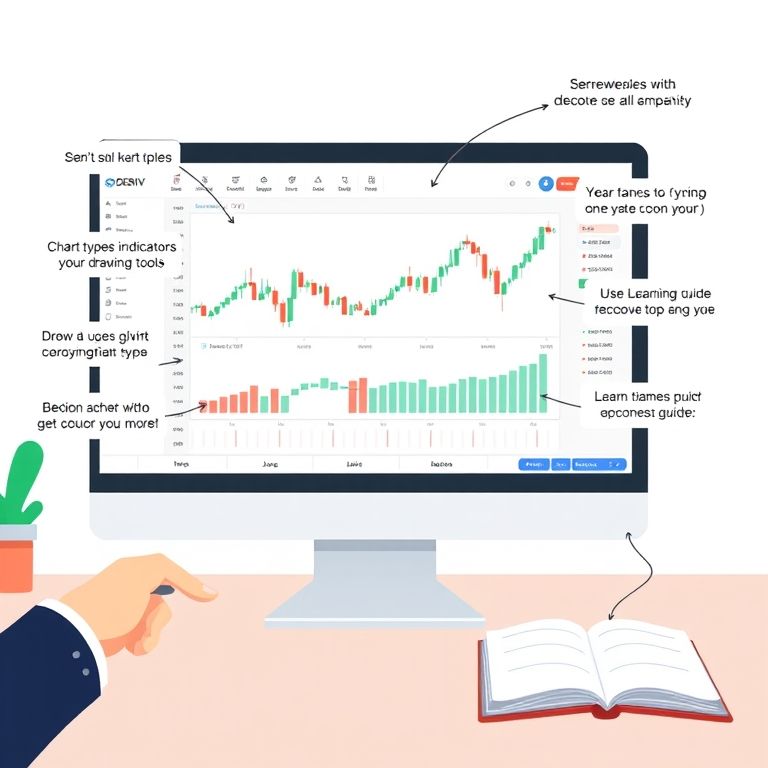How to use Deriv Trading View for beginners?
How to use Deriv Trading View for beginners?
Introduction
Imagine logging into Deriv and seeing a powerful TradingView chart ready to help you dissect price action across multiple markets. You’re curious, a bit overwhelmed, but quietly hopeful that a clean setup and simple rules can turn complexity into clarity. This guide walks through practical steps, features to leverage, and real-world notes that help you start trading with confidence—covering forex, stocks, crypto, indices, options, and commodities.

Getting started on Deriv Trading View
- Access and setup: Open Deriv, switch to the TradingView charts panel, and pick a virtual or real account. Start with a single market you know well to reduce noise while you learn the toolkit.
- Timeframes and chart types: Try a few timeframes (e.g., 15-minute, 1-hour, daily) to understand short-term moves and longer trends. Start with a clean candlestick chart to spot typical patterns, then experiment with line or Heikin-Ashi views for smoother trends.
- Indicators and drawing tools: Add a couple of simple indicators (moving averages for trend, RSI for momentum) and use drawing tools to mark support, resistance, and trend lines. Keep it lean at first; too many indicators can cloud judgment.
- Watchlists and assets: Build watchlists that group assets by your focus—forex majors, key indices, popular crypto pairs, established stocks, or commodity blocs. This helps you compare setups quickly across markets.
- Alerts and risk controls: Set price alerts at levels where you’d take profits or cut losses. Pair alerts with sensible risk knobs—position size, stop loss, and a defined risk-per-trade rule.
Key features and how to use them
- Cross-asset capabilities: Deriv Trading View brings forex, stock, crypto, indices, commodities, and even options into one canvas. This makes it easier to spot inter-market relationships (e.g., how USD weakness might drive commodity prices or stock indices).
- Real-time data and charts: Live pricing helps you observe intraday volatility and reaction to news. Use intraday sections to practice quick decision-making, then move to daily charts to confirm a broader trend.
- Custom indicators and templates: Save a couple of customized templates that reflect your strategy—trend-following for chasing sustained moves, or mean-reversion templates for range-bound markets.
- Risk management basics: Always align chart setups with a stop loss, defined target, and position size that fits your account. Use trailing stops as a flexible way to protect profits on swing moves.
Practical strategies for beginners
- Start with one asset class: If you know EUR/USD or NASDAQ, begin there. Validate your approach on demo then plan a gradual live transition.
- Trade with the trend: Prefer setups where price is above a rising moving average or momentum confirms a move. Use pullbacks to enter rather than chasing breakouts in choppy markets.
- Keep learning in layers: Add one new rule or tool at a time (e.g., a second indicator or a risk parameter) and observe how it changes outcomes over several trades.
- Document and refine: Maintain a simple journal—entry reason, exit rationale, and what you learned. Small refinements add up.
Industry context and forward-looking notes
- DeFi and challenges: Decentralized finance is reshaping liquidity and access, but it brings volatility, regulation gaps, and reliability concerns. The core lesson is to balance innovation with risk awareness and proper safeguards.
- Smart contracts and AI: Expect more AI-driven insights and automated strategies tied to smart contracts. These can accelerate pattern recognition and execution, but require diligent oversight and robust risk controls.
- Prop trading prospects: Prop desks seek scalable models that blend solid risk management with data-driven decisioning. Deriv’s integrated charting and multi-asset access can support a lean team’s research workflow, testing ideas across markets before live deployment.
- Education and sustainability: For a beginner, the best edge is steady learning, realistic expectations, and a cautious scaling plan. A platform that combines intuitive charts with practical risk tools helps bridge the gap between curiosity and consistent performance.
Promotional cues and takeaway slogans
- Your edge begins with clarity on the chart.
- Learn, practice, and grow—with Deriv Trading View as your home base.
- Simple setup, smarter decisions, steady progress.
Bottom line
Deriv’s Trading View integration offers a practical, multi-asset playground for beginners to learn price behavior, test ideas, and build confidence without losing sight of risk. As markets evolve toward more automation and smarter contracts, the toolkit you start with today can evolve into a robust, disciplined approach tomorrow.
YOU MAY ALSO LIKE




